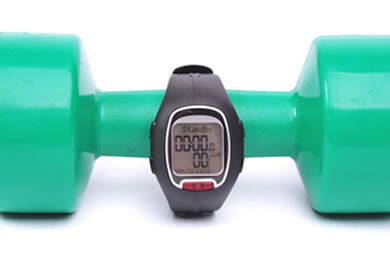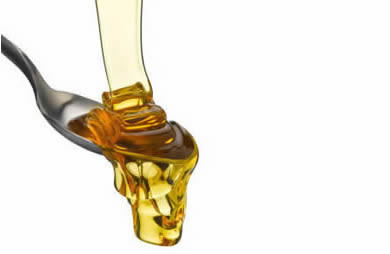Clutter can get out of control in a hurry. Odds and ends get stashed in a junk drawer to remain for eternity. Mud rooms become places where muddy shoes land and never leave. Nightstands breed glasses of water and hand lotion and books. And bookshelves, well, they become catchalls for way more than novels.
So you want to declutter and maybe donate a few things to charity or gear up for a garage sale, but where on earth do you start? The thought of decluttering the entire house is understandably overwhelming. But we've got a process to help you break this massive task into manageable pieces: a 30-day plan to less clutter.
Depending on the severity of your personal clutter, some tasks may be best suited for longer weekend projects or divided into smaller tasks (such as a garage clean-up). But some are smaller and easy to fit into any day. No matter how long it takes you, each item on the list will have you one step closer to a cleaner house and a lighter outlook on life.
BathroomDay 1: Medicine Cabinet
Toss expired medications, hotel shampoos that you'll never use, and throw out lotions you've had since 1990. While you're at it, give the mirror a quick wipe, too.
Day 2: Shower
Get rid of the extras and empties in your shower. Invest in a shower caddy to keep everything organized and in one spot.
Day 3: Makeup Drawer/Bag
Go through your makeup bag or drawer and reassess some of the items. Hot pink eye shadow you haven't touched since 1980? Toss! Lipstick that doesn't smell quite right anymore? You know what to do. If you haven't used it in a year, it's time to trash it.
Day 4: Linen Closet
Over time those neatly stacked towels start to shift and folded sheets somehow end up on the floor. And why is your kiddo's baseball bat in there, anyway? Take stock of what's in the linen closet, straighten what you want and consider donating items you haven't used in more than a year to charity.
BedroomDay 5: Nightstand
Nightstands collect books, water bottles and electronics along with gobs of dust. Clear it off, wipe it down and leave only the bare minimum.
Day 6: Dresser
Dressers can hide a lot in their drawers. Open every drawer, refold messy clothes and match every sock. Start a donate pile of any clothes you no longer need and a toss pile of holey shirts and socks you can part with.
Day 7: Master Closet
Add to those donate and toss piles by going through your closet. Follow your gut: You know what you're regularly wearing and what haven't worn in ages. Try not to let sentimentality get in the way of decluttering!
HallwayDay 8: Entryway/Mudroom
Check the entrances to your house for out-of-place clutter. Kids kick off shoes and drop bags; adults leave keys and mail. Come up with a system for stuff that should be there (like hanging hooks or a coat rack or shoe cubbies) and instill habits to keep the space clear otherwise.
Day 9: Coat Closet
Coat closets often become hiding places for more than just winter jackets. See what's been hiding in its depths that belongs somewhere else and what you can pull out to toss.
KitchenDay 10: Kitchen Drawers
Why so many crumbs, kitchen drawers? And why is this burned spatula still hanging around? And why are there still baby spoons in the silverware drawer when your youngest child is in kindergarten? Toss or donate! Then organize so the things you use the most are the most easily accessible.
Day 11: Kitchen Cabinets
When you're quickly cleaning up after dinner it can be easy to throw pots and pans and bowls into cabinets willy-nilly, so take time to straighten cabinets and organize items if their placement isn't working for you. Infrequently used items can go in a pantry or other storage spot to free up more space for items you do use all the time. Those storage containers without lids and those lids without matching containers? Now's the time to toss the lids. Use the containers themselves as storage caddies for small items in drawers or cabinets throughout the house.
Day 12: Pantry
Give your pantry an organizational once-over. Organize canned goods by type, check expiration dates and get rid of foods you'll never eat (like that trendy food you tried and hated). Unexpired and shelf stable foods can be donated to your local food pantry.
Day 13: Spice Rack
I recently went through my spice rack and was appalled that some of my spices were purchased more than four years ago. If you've got spices that could be in kindergarten, you're probably not using them very frequently in your favorite recipes, so it's likely safe to toss them. Plus, fresh spices will taste better anyway!
Day 14: Refrigerator and Freezer
Many people try to give their fridge a look once a week or so to toss any leftovers that are moldy, but you likely don't think about condiments and other fridge staples. Check all the bottles and jars and toss any that are expired or that you just never use (like that hot sauce you tried and decided you hated).
Day 15: Junk Drawer
Junk drawers by their very nature are designed to hold junk and odds and ends that don't really belong anywhere else. But give it a look to see if there's any obvious trash, and see if there's anything you could move to another spot. You just might find that set of keys you thought you'd lost forever.
Day 16: Under-Sink Storage
If you've got pedestal sinks throughout the house, you get off easily on this chore. But if you've got under-sink storage, like under the kitchen sink, look under there to see what's been hiding and what needs to go.
Living RoomDay 17: Mantel
A fireplace is lovely--except when it's covered in clutter and junk. It takes away from the beauty of a roaring fire! So if your mantel is a storage place for DVDs or books or mail and other items that don't belong, try to find a spot for the unnecessary items to clear it off.
Day 18: Bookshelves
Bookshelves are great for storing and displaying books, art, accent décor, family pictures and more. But they can be a problem when they start to be holding places for extra clutter that makes them look less attractive. Give your bookshelves a glance to see if there's anything that doesn't belong. Then rearrange the items so it looks deliberate, not haphazard.
Day 19: Storage Furniture
Go through that console table in the living room, the armoire in the guest bedroom and the trunk sitting in the corner of the basement. See if you really need its contents—and if you even need the actual furniture itself!
Home OfficeDay 20: Office Desk
Workspaces can be hard to keep clutter-free. When you're at your desk, you're working or paying bills rather than focusing on keeping it clean. So do a sweep of the surfaces in the office and assess what you can keep and what you can toss.
Day 21: Filing Cabinets
Filing cabinets can get filled in a hurry, so go through yours to see what you can shred or recycle. You probably don't need that phone bill from 2005.
Day 22: Mail
Junk mail, bills and magazines pile up faster than dust bunnies. Clear your mail storage area and come up with a system for discarding junk immediately and storing bills that need your attention where they won't get overlooked. For instance, keep a small recycling bin just inside the front door so junk can go straight from the mailbox into the bin.
Kids' RoomsDay 23: Kids' Closets
Kids outgrow clothes at the speed of light and stain and tear the rest. Go through the closets to figure out what's wearable, what fits and what can be donated or discarded.
Day 24: Kids' Toy Bins
It's all too easy to accumulate a lot of toys, but kids also lose interest and outgrow toys fairly quickly, too. Have your kids help you go through toys and sports equipment to figure out what they're still using and what can be discarded, donated or handed down to a friend's little ones.
Other SpacesDay 25: Laundry Room
The most likely clutter offender in my laundry room? A shirt that's "dry clean only" that has been laying there unlaundered for eons. If that's the situation in your house, label and hang a reusable bag for dry cleaning and get the clutter off the floor. Other laundry offenders include coins and receipts that fall out of pockets and end up on the dryer. Clear it out!
Day 26: Porch
Porches can get cluttered quickly with gardening equipment that never got put in the shed and shoes that got left outside because they were muddy. Take stock of the porch and put items in their proper spots.
Day 27: Hobby Room
Have a space or work room for hobbies or home improvement items? See what you can pitch or donate and what you can better organize.
Day 28: Basement
Now that you've gone through your house and properly stored things in their rightful places or gotten rid of them, check out your actual storage spots. If you've had boxes of books packed away for years, chances are that you don't need them (and won't miss them). Can you rearrange anything to make more space? Can you sell or donate anything you don't need? Is it time to rent a dumpster and really clear things out?
Day 29: Garage
The garage can be quite a chore, so leave it for the weekend and a day when it's beautiful outside. Get rid of what you don't need, pump up flat bicycle tires and get that lawnmower ready for spring!
Day 30: Car
When you're finished with the garage, don't forget about your car. Get rid of the obvious trash (empty water bottles, wrappers, etc.) but also check the glove box for expired insurance cards you can toss and snacks that melted last summer.
Your Bonus ProjectYou know that area in your house or life that needs to be organized. If it didn't make this list, your final project is to organize that space, whether it's the attic, a loft space, an offsite storage unit or bin full of your childhood stuff.
Breaking down a massive job into smaller more manageable steps can make a task like decluttering your entire life seem slightly more manageable. In just 30 days, you'll have a noticeably less cluttered house, and maybe you'll even find a few things you thought had disappeared forever! Plus, you might make a few bucks at a garage sale or feel really good about donating some quality items that you no longer need.
About the Author
 Erin Whitehead is a health and fitness enthusiast who co-founded the popular website FitBottomedGirls.com and co-wrote The Fit Bottomed Girls Anti-Diet book (available May 2014). Now busier than ever with two kids, she writes about healthy pregnancy and parenting at FitBottomedMamas.com. Erin Whitehead is a health and fitness enthusiast who co-founded the popular website FitBottomedGirls.com and co-wrote The Fit Bottomed Girls Anti-Diet book (available May 2014). Now busier than ever with two kids, she writes about healthy pregnancy and parenting at FitBottomedMamas.com.
|
|
 Erin Whitehead is a health and fitness enthusiast who co-founded the popular website
Erin Whitehead is a health and fitness enthusiast who co-founded the popular website 



.png)














